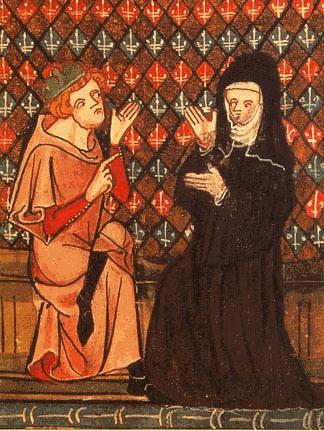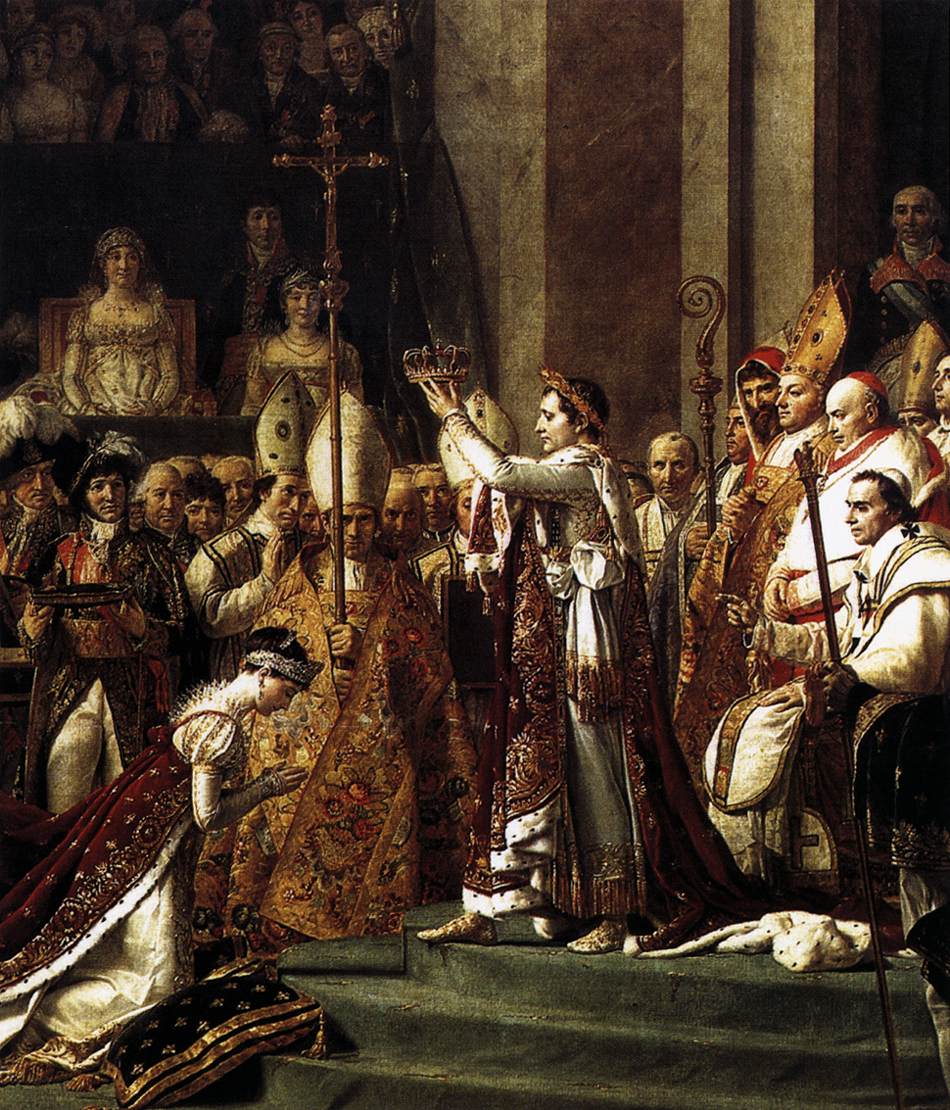Friday, February 12th, 2010
At a Valentine party earlier this week, I took a quiz to test my knowledge of famous couples in history. As a group, the party members did pretty well – except we missed one question about Aspasia and Pericles.
The quiz got me thinking about some famous couples that are depicted in art. So I decided to make a quiz of my own. See if you can name any of the famous couples in the following works of art:






This one is a little tricky. Hint: look at the knife in the woman’s foot. You might be more familiar with another variation of this story, where this woman slashes her thigh to show her loyalty to her husband.
How many couples did you guess? Check your answers in the comments section of this post. You get extra points for every artist that you can name, too.
Happy Valentine’s Day!
Tuesday, February 9th, 2010
 I sometimes start my lectures by talking with students about art that has recently been in the news. Tonight, though, it was a student who shared an interesting news item. She had overheard people discussing this NPR story about Daniel Rockmore, a math professor at Dartmouth College.
I sometimes start my lectures by talking with students about art that has recently been in the news. Tonight, though, it was a student who shared an interesting news item. She had overheard people discussing this NPR story about Daniel Rockmore, a math professor at Dartmouth College.
Rockmore is using his mathematical skills to help determine if drawings are correctly attributed to Pieter Bruegel the Elder, a Northern Renaissance artist. Bruegel used various pen strokes which art connoisseurs have noted to be especially characteristic of the artist’s work. Nevertheless, connoisseurs have had difficulty in concretely identifying some of Bruegel’s work (e.g. the above image of an Alpine landscape (Morgan Library and Museum) was attributed Bruegel until recently). In order to help determine which strokes are Bruegel-like and which ones are not, Rockmore used his math skills to create a computer program that analyzes the pen strokes.
It sounds like an interesting program. It makes me wonder more about how computers and technology will affect the future practice of connoisseurship. Could future art attribution be left completely in the hands of technology, instead of actual connoisseurs? I imagine that couldn’t happen, but it’s an interesting/scary thought.
Rockmore made an interesting point at the end of the article, explaining that this program is a way to deconstruct art and determine what it means to be Picasso-like or Bruegel-like. In a way, I think that’s true, but I also think that an artist’s “hand” and styles can never be completely, concretely deconstructed. Even if an artist is relatively consistent in a technique, stylistic approach or color scheme, artists are subjective to change and variation. Although I think Rockmore has an interesting and useful idea, I don’t think it can find all of the answers to explaining an artist’s style.
Saturday, February 6th, 2010
You might be aware that the annual conference for College Art Association (CAA) is starting next week (February 10-13). I wish I could go, but a) I can’t afford to fly to Chicago and b) I have to teach. Nonetheless, I have poured through the conference catalog (see online list here) and have marked the sessions that I wish I could attend:
– “Women, Femininity, and Public Space in Nineteenth Century Visual Culture.” Chairs: Heather Belnap Jensen (Brigham Young University) and Temma Balducci, (Arkansas State University)
– “Sculpture and Race, 1750 to the Present.” Chair: Linda Kim, Smith College
– “Representations of Brazil and Shifting Identities.” Chairs: Aleca Le Blanc (University of Southern California); Elena Shtomberg (University of Utah). (*This session was MADE for me to attend! Why am I not going to be there?!?! I’m especially intrigued by Rebecca Parker Brienen’s topic, “Frans Post’s Brazilian Landscapes.”)
– “Thinking about Colonial Latin American Art.” Chair: Elizabeth Hill Boone, Tulane University. (*Again, this session perfectly aligns with my interests! Bah! I really wish I could hear “The Politics of Competing Visualities in Early Colonial Latin American Art” by Jeanette Favrot Peterson with Thomas DaCosta Kaufmann.)
– “‘Classicisms,’ ‘Mannerisms’ and ‘Baroquisms’: Sixteenth – and Seventeenth-Century Visual Culture in Europe and Other Cultural Centers.” Chairs: Larry Silver (University of Pennsylvania) and Lynette M. F. Bosch, State University of New York, Genesco.
Are you going to CAA? What sessions will you/did you attend? Does anyone else have a wish list with no possibility of attendance (and want to commiserate with me)? I just hope that some of these lectures are recorded or later published. For now, though, it looks like I’ll just be able to follow the
conference blog so I can feel part of the action. Sigh.
Monday, February 1st, 2010
Up until this past weekend, my favorite portrait of Louis XIV was this infamous portrait by Rigaud (1701):
 One of the reasons I love this portrait is because it captures the ostentatious, over-the-top personality of the absolute monarch. With all of that ermine fur, there is no question that this guy is a big spender. And how many people at age sixty-three have enough self-confidence to show off their legs (while wearing high-heels?). You have to admit, Louis Quatorze had guts.
One of the reasons I love this portrait is because it captures the ostentatious, over-the-top personality of the absolute monarch. With all of that ermine fur, there is no question that this guy is a big spender. And how many people at age sixty-three have enough self-confidence to show off their legs (while wearing high-heels?). You have to admit, Louis Quatorze had guts.
Anyhow, while doing research this past weekend, I came across a new favorite depiction of Louis XIV. I present to you the king, costumed in his role as Apollo, the “Rising Sun” (part of the court ballet Royal Ballet of the Night (c. 1650, see here for more information)):
 I knew that Louis XIV performed in ballets, but I didn’t realize that any extant depictions of the costumed monarch existed. Don’t you love his peacock-feathered skirt? And the wavy, golden sun rays that extend from everywhere (even his shoe buckles!)? It’s no wonder that Louis XIV was given this role in the ballet, since he continually compared himself to Apollo and even called himself the “Sun King.”
I knew that Louis XIV performed in ballets, but I didn’t realize that any extant depictions of the costumed monarch existed. Don’t you love his peacock-feathered skirt? And the wavy, golden sun rays that extend from everywhere (even his shoe buckles!)? It’s no wonder that Louis XIV was given this role in the ballet, since he continually compared himself to Apollo and even called himself the “Sun King.”
I know that Louis XIV was a incredibly selfish person that did a lot of horrible things to upkeep his vanity and image. But I have to admit, I think this guy is absolutely fascinating. Who can’t be fascinated with someone who wears outfits like this?
 This one is a little tricky. Hint: look at the knife in the woman’s foot. You might be more familiar with another variation of this story, where this woman slashes her thigh to show her loyalty to her husband.
This one is a little tricky. Hint: look at the knife in the woman’s foot. You might be more familiar with another variation of this story, where this woman slashes her thigh to show her loyalty to her husband.






